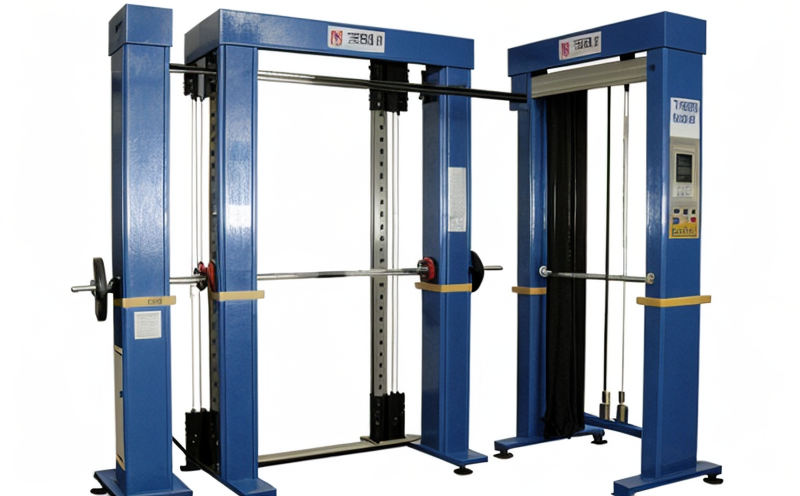Fabric density check using pick glass magnification method
The fabric density check using the pick glass magnification method is a critical procedure in textile testing. This technique allows for an accurate assessment of the yarn count and fabric construction, which are key determinants of the fabric's quality and performance.
This method involves the use of a magnifying glass known as a "pick glass" to visually inspect the fabric at high magnification. The pick glass is used to measure the number of picks (warp yarns) per inch in both directions, providing insights into the fabric's structure and density.
Understanding fabric density is essential for quality control and compliance with industry standards such as ISO 14972:2016. This standard specifies requirements for fabrics used in medical devices, ensuring that they meet specific performance criteria regarding strength and durability. Fabric density also plays a crucial role in the design of garments and textiles intended for various sectors including automotive interiors, healthcare, and industrial applications.
During the test, the fabric sample is carefully prepared to ensure it reflects the true characteristics of the material under examination. The specimen should be cut from an area that is representative of the product's typical structure, avoiding any defects or anomalies. Once prepared, the sample is mounted on a stable surface where it can be easily observed through the pick glass.
The process involves counting the picks per inch in both directions (lengthwise and widthwise) to determine the fabric density. This count provides valuable information about the yarn spacing and fabric construction, which are directly related to the fabric's strength and durability. The results of this test help manufacturers to ensure that their products meet the required specifications and standards.
By employing the pick glass magnification method, textile experts can identify potential issues early in the production process, ensuring that any necessary adjustments can be made before the final product is released. This not only enhances product quality but also contributes to cost-effectiveness by minimizing waste and rework.
Why It Matters
The importance of fabric density cannot be overstated, especially in sectors where the performance and durability of textiles are critical. In industries such as automotive interiors, healthcare, and industrial applications, the strength and integrity of fabrics can directly impact product safety and longevity.
Understanding fabric density through methods like pick glass magnification is essential for several reasons:
- Quality Control: Ensures that each piece of fabric meets the required specifications, reducing the risk of non-compliance with industry standards.
- Durability and Performance: Higher density fabrics often exhibit greater strength and resistance to wear, leading to longer product life cycles.
- Consistency: Consistent fabric density across production batches ensures uniformity in product quality, which is crucial for maintaining brand reputation.
- Compliance with Standards: Many international standards, including ISO 14972:2016, require fabric manufacturers to conduct regular checks of fabric density to ensure compliance. Failure to meet these standards can result in costly recalls and reputational damage.
In summary, the pick glass magnification method is a vital tool for quality assurance in textile production, providing valuable insights into fabric structure that are essential for maintaining high standards of product performance and safety.
Why Choose This Test
- High Accuracy: The pick glass magnification method offers a highly precise way to measure fabric density, ensuring accurate results that are critical for compliance with international standards.
- Ease of Use: The simplicity of the pick glass makes it accessible even in smaller laboratories or workshops where advanced equipment is not available.
- Visual Inspection: Provides a visual assessment, which can be particularly useful for identifying fabric defects that may affect quality and performance.
- Cost-Effective: The method does not require expensive laboratory equipment or software, making it an affordable option for businesses of all sizes.
- Compliance Assurance: Ensures that the fabric meets the required specifications as per ISO and other relevant standards, reducing the risk of non-compliance issues.
Quality and Reliability Assurance
The pick glass magnification method is an indispensable tool in quality and reliability assurance for textile manufacturers. By regularly conducting this test, companies can ensure that their products consistently meet the highest standards of performance and durability.
Regular fabric density checks using a pick glass help identify any inconsistencies or defects early on in the production process. This proactive approach allows manufacturers to address issues before they become significant problems, leading to improved product quality and reduced waste.
In addition to ensuring compliance with international standards such as ISO 14972:2016, fabric density checks using pick glass magnification also contribute to the reliability of products. By maintaining consistent fabric density across production batches, companies can ensure that their products perform predictably and consistently under various conditions.
The method's ability to provide a visual assessment is particularly useful for identifying defects or anomalies in the fabric structure. These insights are invaluable for improving production processes and ensuring that each piece of fabric meets the required specifications. This level of quality control not only enhances product reliability but also contributes to building consumer trust and satisfaction.





